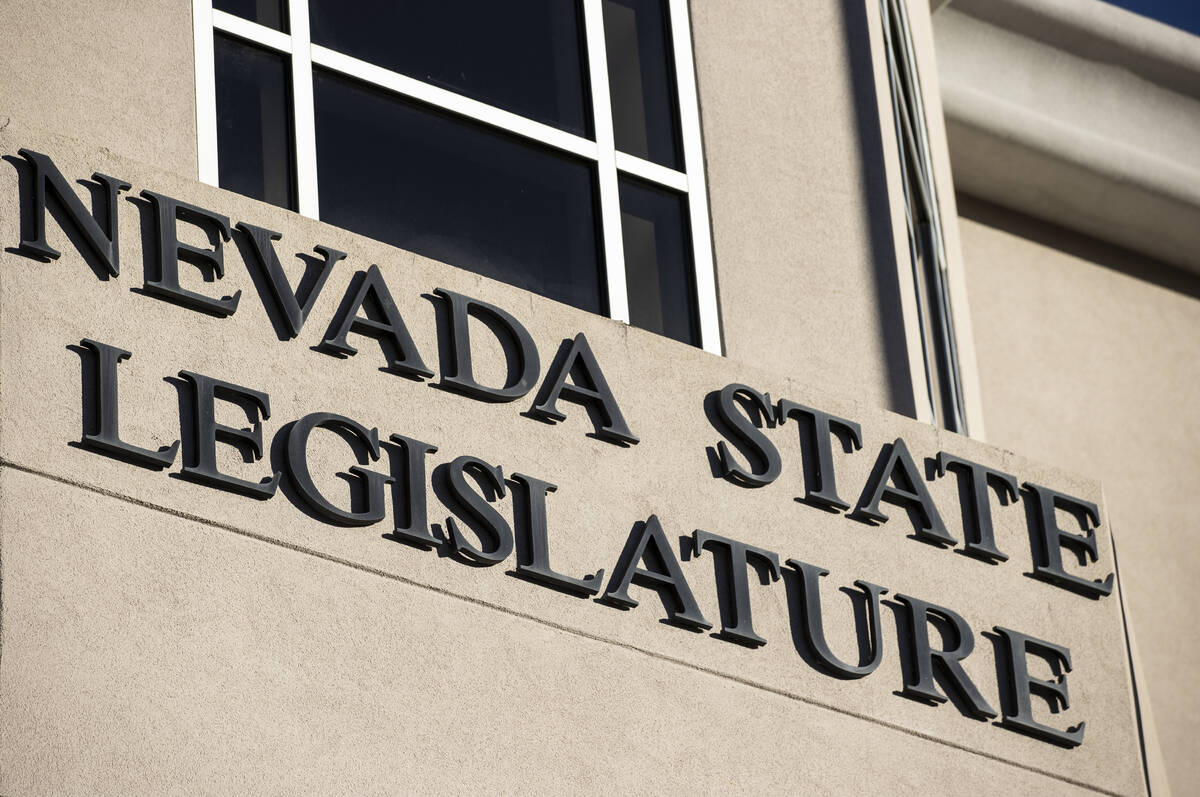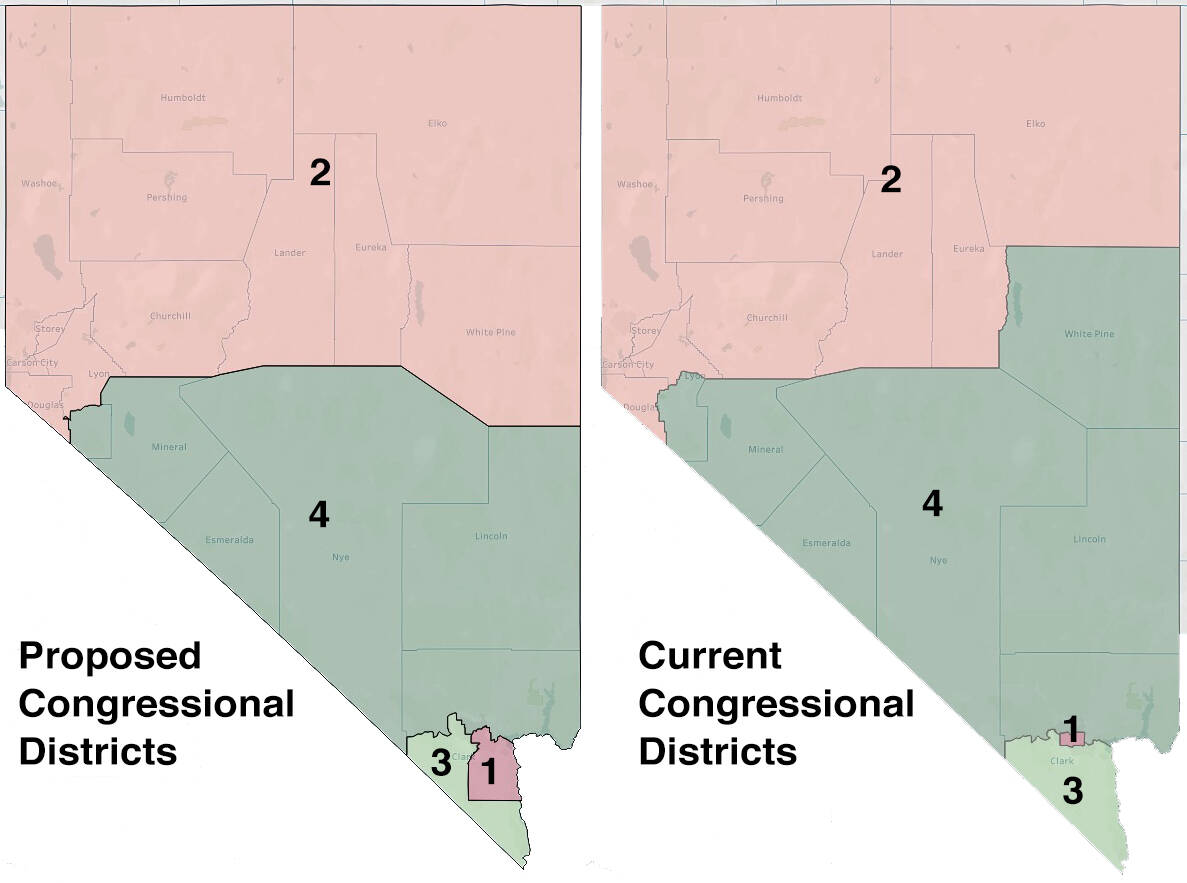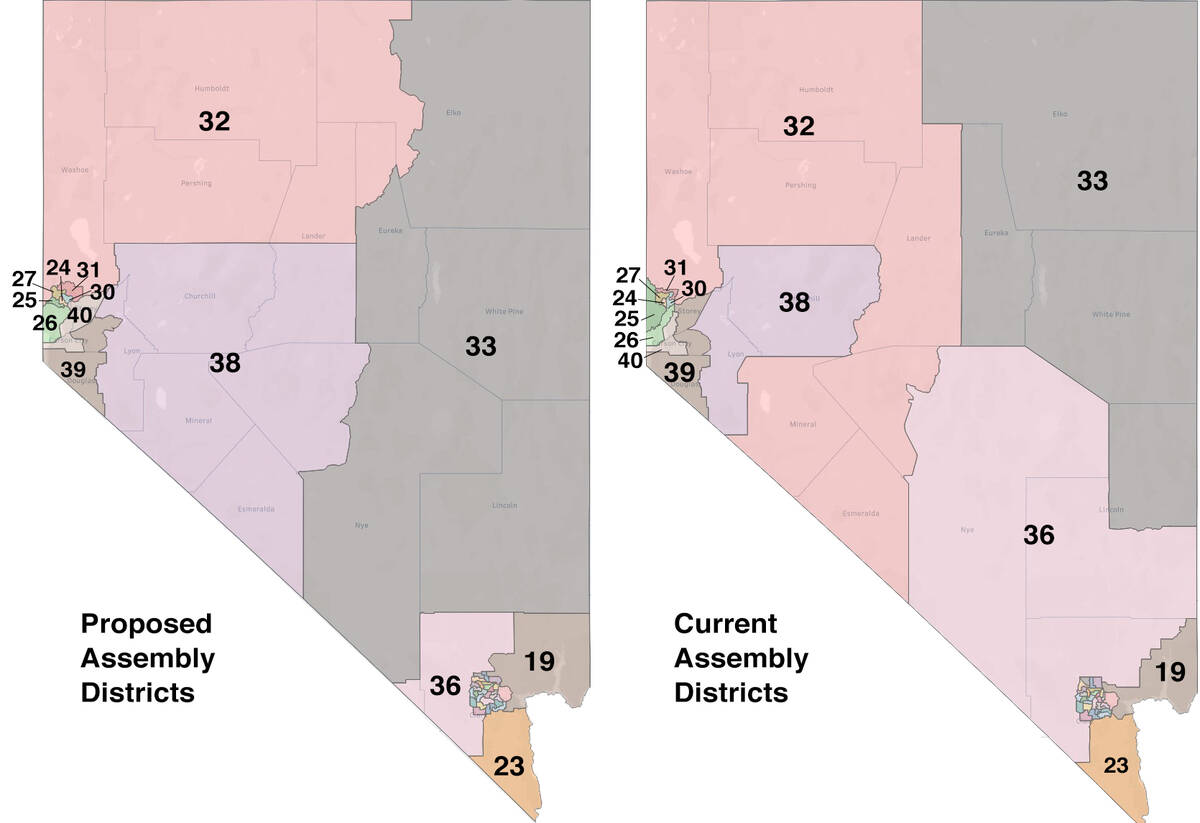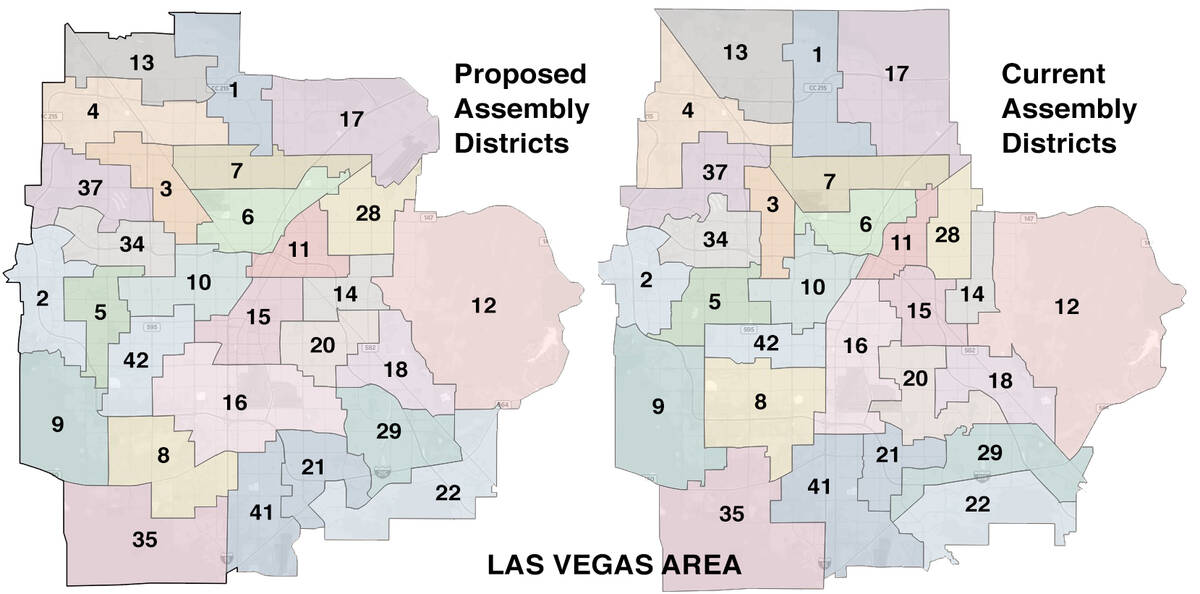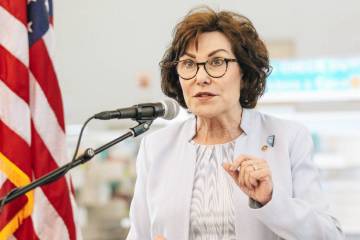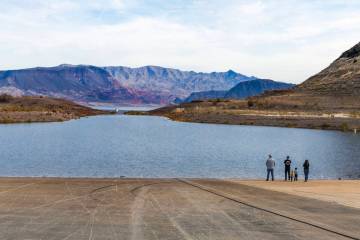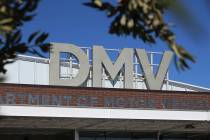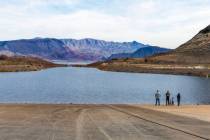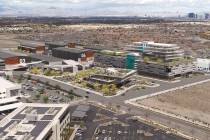Democrats unveil state redistricting maps
CARSON CITY — The Democratic legislative majority Tuesday released its blueprint for redrawn congressional, legislative and board of regents districts ahead of an upcoming special session where lawmakers will adopt maps to lay the electoral playing field for state elections through 2030.
“Throughout the state, we’ve proposed compact districts that keep local communities together, including maintaining representation for rural and northern Nevada and undoing the prior map’s splitting of tribal communities,” Assembly Speaker Jason Frierson and Senate Majority Leader Nicole Cannizzaro, said in a joint statement.
Noting Nevada’s increasing diversity, as documented in the 2020 census, they said the proposed maps “strive to both protect and expand the voting power of African-American and Hispanic Nevadans” while increasing representation opportunities for Asian American and Pacific Islander populations.
A special session on redistricting is expected to be called in a matter of days, though no date has yet been announced. The new maps are available on the legislature’s redistricting website.
Per the legislative leaders, proposed new congressional districts “account for massive population shifts in the Las Vegas Valley while avoiding splitting established local jurisdictions and communities of interest, including North Las Vegas, Henderson, and East Las Vegas.” Three of four districts have populations that are majority non-white, an increase of one majority non-white district.
In the Legislature, 29 out of 63 proposed districts — 42 in the Assembly and 21 in the Senate — have a majority non-white population. In 2011, only seven did.
Hispanic or Latino Nevadans constitute more than one-quarter of the population in 29 districts. African Americans constitute more than one-quarter of the population in five districts, up from three currently.
Asian American and Pacific Islanders constitute more than one-quarter of the population in five legislative districts, up from one currently.
Nevada’s overall population grew 15 percent from 2010 to 2020. The white population decreased from roughly two-thirds to one-half of the total over the decade.
At the Congressional level, Nevada’s four districts each will represent about 776,000 people. As proposed under the Democratic majority’s plan, the state’s two southernmost districts in Clark County would be redrawn to more evenly divide Democratic voting strength between Districts 1 and 3. Currently, the 1st District is more than 2 to 1 Democrat over Republican, while in the 3rd District, Democrats outnumber Republicans by slightly more than 10,000 active registered voters.
Redistricting is constitutionally required every 10 years, following the decennial census.
Contact Capital Bureau reporter Bill Dentzer at bdentzer@reviewjournal.com. Follow @DentzerNews on Twitter.



